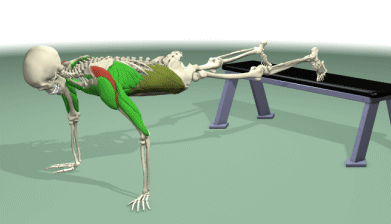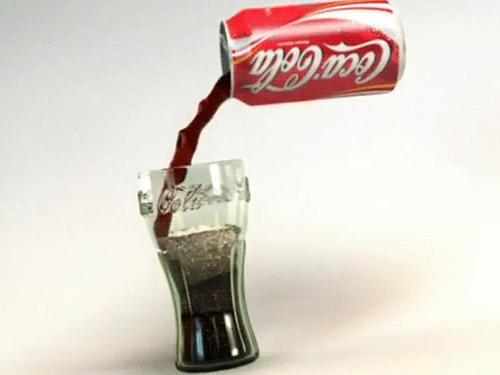




THE FITNESS
DIGEST.
Even though most of us think a smile is the loveliest part of our face, we do little to keep it that way. According to research and survey only a third of us bother to clean our teeth twice a day. Our teeth are neglected until a nagging pain or bad breath tells us it's time to visit a dentist It's easy to forget about our teeth because it's not a visible problem. We can look at our outer body and see if we're too fat or thin, but as long as the front six teeth look fine that's as far as we go.
But having a beautiful, healthy mouth isn't just about having a quick poke around with a toothbrush - it encompasses everything from careful cleaning to a healthy diet. Neglect doesn't just cause cavities, it means gum disease, infections and the dreaded smelly breath –the biggest turn off in partners, And if that's not enough incentive to brush up your act, how does the idea of a set of false teeth for your fortieth birthday strike you?
If it's fear of the dentist that's your main stumbling block, the good news is most surgeries today are friendly, comfortable pain-free zones. And with all the new oral hygiene products on the market it's really never been easier to keep your teeth healthy Taking care of your teeth will make you feel confident. Your mouth will feel fresh and healthy, you'll be unlikely to have bad breath and you'll be reassured you're not getting any disease. All you need is six minutes a day - that's less time than it takes to warm up before your gym workout.
:The ultimate tooth –brushing routine.
This six-minute, once a day Routine will keep your teeth in tip-top condition:
; Squeeze a bean-sized drop of toothpaste onto your brush.
;Using small circular movements, clean the outside of your teeth, counting up to six on each two teeth before moving on. This makes you stay long enough to lift all the sticky plaque.
;Next clean the inside surface of your teeth, next to your tongue using a small jiggling movements back and forth. Clean the biting surface of your teeth with a surfing action.
; Use a tongue scraper thoroughly. The back of the tongue especially has been implicated in production of bad breath.
; Floss. Clean in between every tooth with dental floss. Using a clean section of floss for each tooth, insert and gently saw it up into the gum margin on each side of the tooth. Any gum bleeding should stop after the first few flossings. Rinse well.
; For those with large spaces between the teeth use the inter-dental tooth brush for effective cleaning between teeth.
Why Are Your Teeth At Risk?
One word: PLAQUE. This mix of bacteria forms naturally from our saliva- you can't stop it (it reforms half an hour after brushing), only try to remove it. When plaque first forms it's harmless but if left behind in a nook for over 24 hours, it starts to cause damage. Bad bacteria proliferate and overcome good bacteria to cause gum disease, bad breath and dental decay. If you controlled your plaque you'd never have any of these problems but it takes time, effort and the right tools.
How Can I Prevent Tooth Decay?
Three main strategies: eat fewer sugar-rich snacks, clean your teeth thoroughly and visit the dentist regularly.
Dental cavities (or caries) are caused by the metabolism of bacteria in plaque. When you eat sugary food, plaque turns the sugar into acid, which attacks and demineralises the protective enamel that coats each tooth. Decay can spread into the tooth's core-dentine - causing toothache and infection. The decay must be removed and be replaced with a filling. If the infection has spread to the roots, you'll need root canal work to remove the nerves.
Our teeth can only withstand several acid attacks every day. Eat formal meals and snack only two times a day. This leaves enough time for saliva to correct the Ph balance and replace calcium ions. If you eat sweets or chocolate, have them all in one go, preferably straight after meals. When you can't clean your teeth afterwards, eat cheese, nuts or seeds, or chew sugar-free gum instead, to neutralize harmful acids.
How Often Should I Clean My Teeth?
You only need to brush once a day to prevent decay. But it must be for at least six minutes to ensure you've removed all the plaque. You can't get away with lots of quickies. Bedtime is probably the best, so you can spend all night with clean teeth, but find the right time for you. Once you've notched up to one thorough brush you can then freshen up with a quick clean.
Flossing once a day is the only way to clean the sides of each tooth where plaque is rife. Alternatively, try inter-dental brushes - the tiny toothbrushes designed to fit between your teeth.
Which Toothbrush?
It's terribly important to find the right tooth brush. Always choose small head to get to the back of the mouth. The outside of top back teeth and inside of the bottom back teeth near the tongue always have lots of plaque on them and you can only get to these with a small-headed brush. The best is medium-soft to soft bristle for everyone - even the most macho of men - because hard brushes can damage your teeth/ gums. You can use an angled-head brush if you prefer. Always change your tooth brush every six weeks to two months.
Which Toothpaste Is Best?
These days toothpastes claim to do everything from freshen your breath to whiten your teeth, but dentists say the main thing is to choose a brand with fluoride. Secondly, don't use too much toothpaste. It can be abrasive, so only use a bean-sized amount. Smokers' toothpastes are the worst. Some are like cleaning your teeth with vim! Check if your toothpaste is too harsh by squeezing a little on your nail and rubbing in with your finger. If you feel grains and granules, it's too abrasive. Whitening toothpastes won't harm your teeth, but they hardly work. Baking soda toothpastes are best; they give an extra-clean feeling with no abrasive action on the enamel.
Avoid synthetic flavorings and colors by using a natural brand of toothpaste.
Brushing Up

Physical fitness Disclaimer and Waiver of liability:
Exercises are not without their risks and the exercise programs in this website may result in injuries.Any person who undertakes these exercises does so at their own risk.To reduce the risk of injuries ,you should consult your doctor before beginning these or any other exercise programs.As with any exercise program ,if at any point during your workout you believe conditions to be unsafe or begin to feel faint or dizzy,have physical discomfort or pain, you should stop immediately and consult a physician.
Daily exercise for Working women.
Jumping Jacks. . Effective workouts.
Group exercise and its benefits.
Calf raises-free style . Push ups.
Tummy exercises. Hoola Hooping .
Fitness Motivational tips. Barbell Squauts.
The myths of spot reduction. Leg press.
Standing calf raises. Concentration curls.
Bench (Tricep) dips.. One arm dumbbell rows.
Pec deck Flye. Fr0nt dumbbell raises. Glute ham raise.
Seated leg curl . Close grip bench press .
.

Please keep comments positive and constructive.
Help the WEBSITE by reporting inappropriate comments to thefitnessdigest@gmail.com . Inappropriate comments may be reported and/or removed.